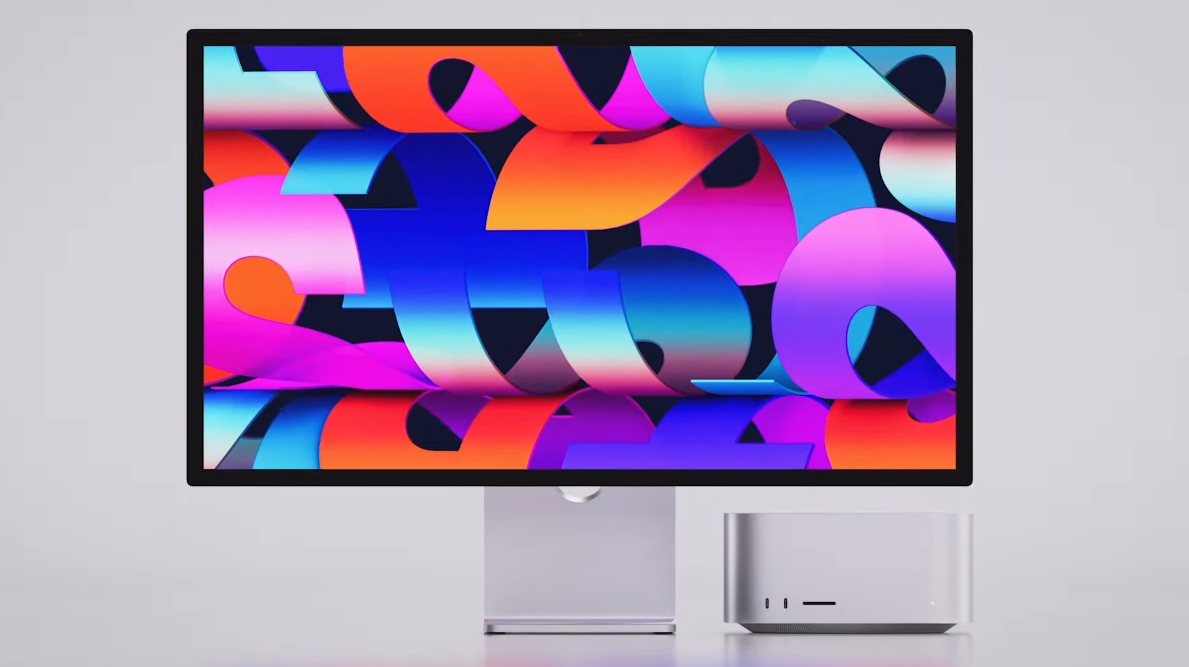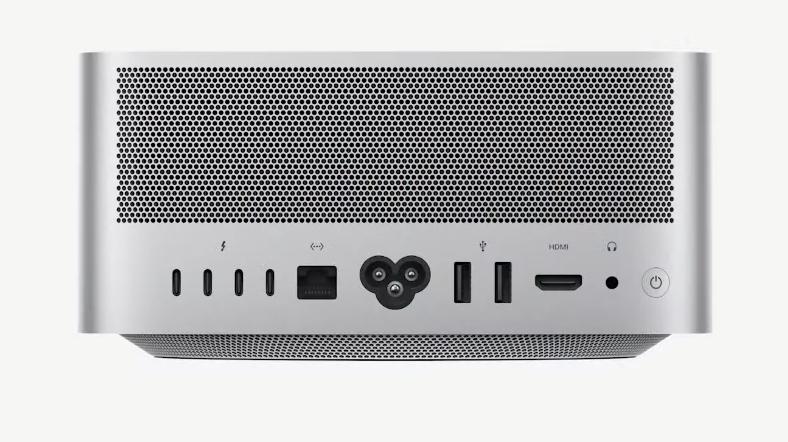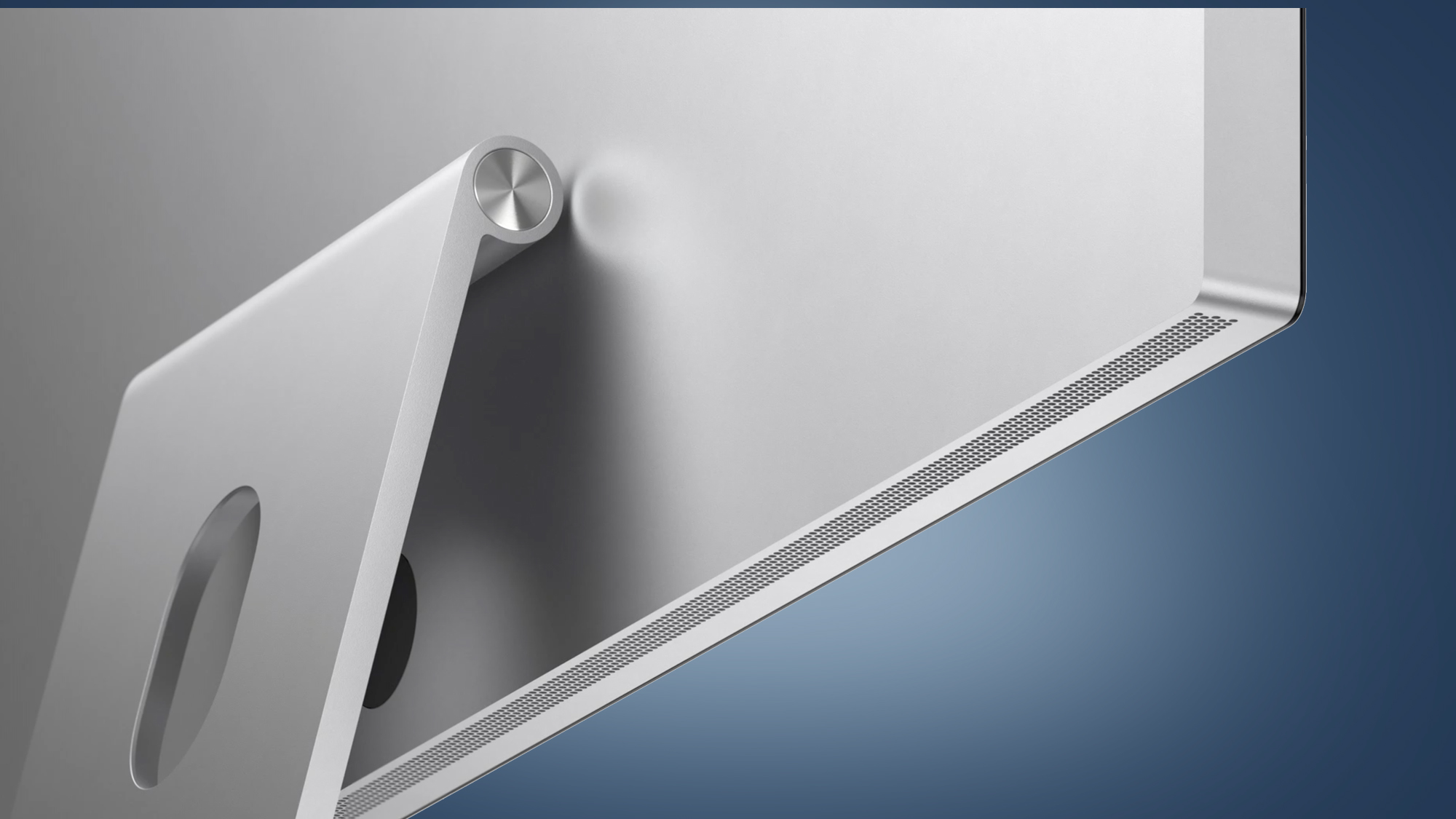Apple might have just made the best workstation for audio lovers

While the Apple M1 Ultra stole the show at its latest March event, we were paying particular attention to the company’s advancements in AV.
Among the dozens of announcements from the event was the news that the new Mac Studio - the $1,999 / £1,999 / AU$3,099 workstation computer that’s aimed at creative professionals - has a key component that audiophiles will really enjoy: a pro audio jack for high-impedance headphones or external amplified speakers.
With it, you should be able to drive even the most notoriously difficult headphones on the market (we’re looking in your direction, Hifiman HE-6) without needing a dedicated amp/DAC. For some, that could be a great reason to upgrade.
We also saw the launch of a monitor that includes spatial audio in the form of the new Studio Display. It's expensive - and it lacks HDR for some reason - but if you want spatial audio everywhere or need it for mixing, it's going to be very tempting.
A computer for all the creatives out there (DJs and audio engineers included)
For years, Apple has been pushing the idea that its prosumer Macs are best-suited for the creative types of the world - video editors, animators and graphic designers. Notably absent from the list of applicable creatives thus far, however, has been audio engineers.
The new Mac Studio moves the needle slightly in that department with its incorporation of a better audio jack.
According to Apple, it’s better than a standard 3.5mm auxiliary port because it has more power behind it - enough to drive a pair of speakers.
Sign up for breaking news, reviews, opinion, top tech deals, and more.
That’s pretty exciting for folks who currently own or are interested in buying a better AV system for their computer - and it’s a stark contrast to where the company went with iPhones a few years ago when it removed the audio jack from its flagship handset.

Apple taketh away, now Apple giveth
In some ways, this could be seen as Apple making up for the faux pas it made a few years ago by removing the audio jack from iPhones - an olive branch to audiophiles, if you will.
The blowback from that move lasted for months as audio fans lambasted the company for removing the universal port in favor of the Apple-exclusive Lightning port and Bluetooth.
To see it resurrected (and souped up) on the Mac Studio is somewhat ironic - but we’re certainly not going to complain about Apple supporting audiophiles.

Spatial audio on a monitor? Yes, please
As for the new Apple Studio Display, the one standout feature for audiophiles is the inclusion of spatial audio - a potential first for any monitor. With it, you should potentially be able to mix music in real-time for spatial audio, which could be a huge boon for DJs and sound engineers looking to work in the latest formats.
To do the heavy lifting, inside the Studio Display boasts a high-fidelity six-speaker sound system that's been tuned for spatial audio formats like Dolby Atmos. Four of those speakers are woofers and two are high-end tweeters. Together, and with a little Digital Signal Processing, you've got a potentially powerful spatial audio player.
But what if you're not mixing or mastering audio? Apple Music delivers spatial audio songs on Mac, which should be a boon for just about anyone, and Netflix shows and films are often available in Dolby Atmos - a nice feature if you plan on watching some movies now and again on your work computer.
It's not the perfect monitor (have we mentioned it doesn't do HDR?) but for fans of high-end audio formats, it's a very tempting option over a traditional work screen.

Nick Pino is Managing Editor, TV and AV for TechRadar's sister site, Tom's Guide. Previously, he was the Senior Editor of Home Entertainment at TechRadar, covering TVs, headphones, speakers, video games, VR and streaming devices. He's also written for GamesRadar+, Official Xbox Magazine, PC Gamer and other outlets over the last decade, and he has a degree in computer science he's not using if anyone wants it.